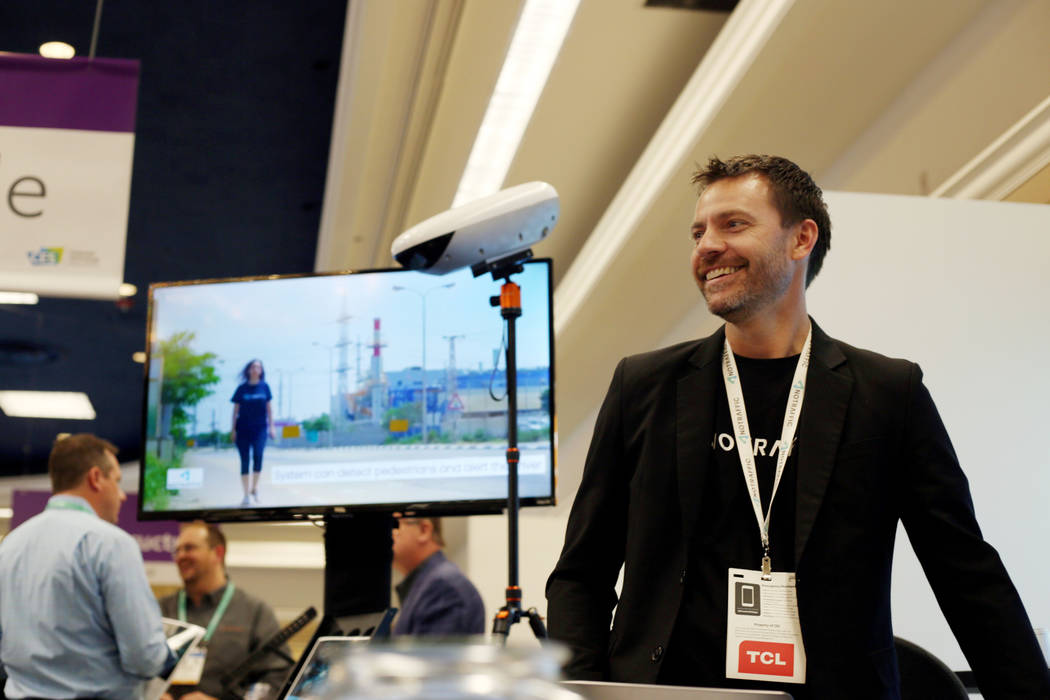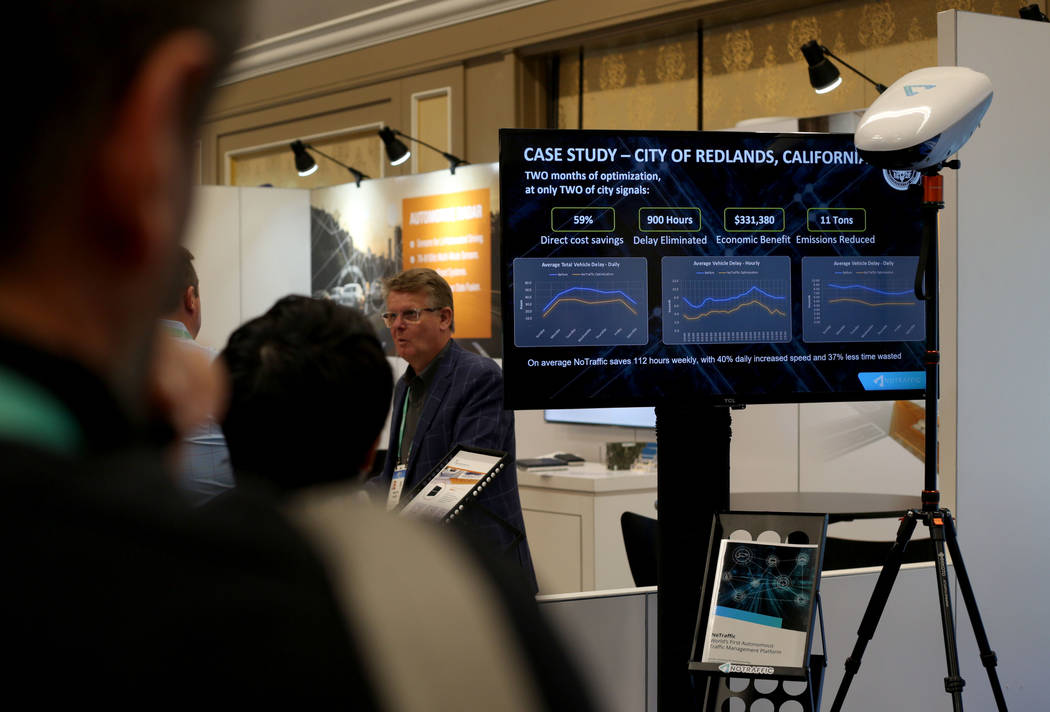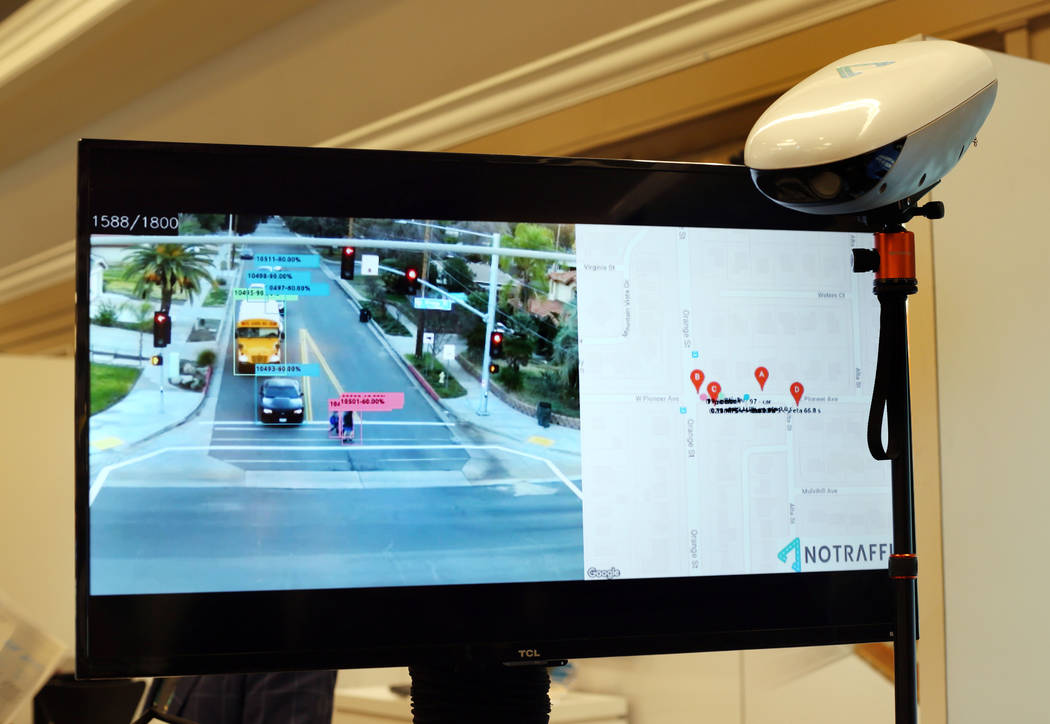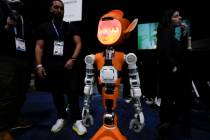CES offers glimpse into tech for Smart Cities like Las Vegas
Imagine a red light turning green because only one idle vehicle is present at an otherwise quiet traffic intersection in the early morning hours. Or a sleek 9-foot-pole posted alongside a city street or freeway that warns of wrong-way drivers.
Much of the technology at CES 2020 that promised to digitize city landscapes centered on the transportation sector, where mobility has been circled as a prominent facet in propelling today’s municipalities into the Smart Cities era.
“I think one of the reasons transportation is a key focus of Smart Cities is because it’s been one of the dumbest industries up until now,” said Laura Schewel, co-founder and CEO of StreetLight Data, a tech company using analytics to enable smarter transportation.
Smart Cities exhibitions might have lacked the visual pizzazz of other vendor showcases during CES, competing against flying taxis, a digital dog that detects high blood sugar levels and an AI clone of Arnold Schwarzenegger. But it also offered a glimpse into how people might interact every day with their city in the future, including Las Vegas, with technology intended to deploy on a large scale and in many instances blend into surroundings.
Companies such as Ekin, NoTraffic, Smartmicro and Traffic Technology Services — which CEO Thomas Bauer said counts the city of Las Vegas as a customer — use real-time data to manage traffic intersections in ways that between them can prioritize pedestrians during school hours, tally the number of passing vehicles or predict the traffic signal ahead based on current speed.
The effort, as explained by exhibitors this week on the CES show floor, requires some combination of sensors, cameras, and other equipment, as well as necessary data-sharing agreements with local municipalities. But Karen Lightman, executive director for Metro21, Smart Cities Institute at Carnegie Mellon University, advised people not to get too bogged down by the technical details.
“It’s not about gadgets and gizmos, and granted I love them, but it’s really about improving efficiency and effectiveness and using technology as a tool,” Lightman said during one of several Smart Cities-focused panels at CES.
People-centered tech
Exhibitors behind predictive traffic behavior technology also pledged to improve fuel savings and reduce the carbon footprint, and unrelated vendors vowed to solve other problems. Sensible Innovations founder Rasha Said pointed to the company’s wayfinding app, which employs visual, text and audio readings of surroundings, as useful to the visually impaired and the general public. The company, Cepton, maintains a sensor system tracking vehicles, pedestrians and crowds for real-time monitoring.
“Smart Cities” has become something of a buzz term in the current technological revolution, yet experts say the movement is simply rooted in trying to make everyday life better. Ultimately Smart Cities must be “citizen centered,” said Park Won-soon, the mayor of Seoul, Korea, a city that has staked its ground as a technology leader.
“If technology does not serve us and amplify our lives, then obviously we’re doing the wrong thing,” said Omar Khan, the chief product officer for Magic Leap, creator of a lightweight wearable computer.
Las Vegas officials have embraced the philosophy, launching a downtown Innovation District to test autonomous vehicles, a smart lighting network and other high-tech initiatives, while ushering in public-private partnerships through its International Innovation Center @ Vegas. A second downtown center, much larger and two stories, is expected to open this spring.
Chris Craig, the city’s deputy Information Technology director, told attendees of one panel this week that it was incumbent upon local governments to assume a leadership role.
“That’s the only way this revolution of Smart Cities is going to happen,” he said.
Secure cities
While technological advances have given rise to connectivity, experts warn there is also inherent risk with linking to an IP address the type of equipment that have historically been disconnected from computer networks.
“I think that’s the attack surface being created,” said Alissa Knight, a senior analyst with Aite Group’s cybersecurity practice.
Cybersecurity also tends to be “more of an emotional conversation,” and companies or cities would do well to be clear with the public about policy and data collection, according to Sameer Sharma, the global general manager for IOT Solutions at Intel.
Fear and misinformation can run rampant among regular people, who often view cybersecurity as a labyrinthine issue, experts say. Diana Blass, a reporter for Kurrant Insights and moderator of one panel, noted how she had referred to the recent cyber attack to the city of Las Vegas’ computer network as a “hack” before she was corrected to call it a “compromise.”
Companies working in Smart Cities, or elsewhere, need to ensure cybersecurity is integrated into the infrastructure during product development, and not merely an add-on feature, Sharma said.
He added security should not only be a consideration to combat malicious behavior but also to be resilient in the face of natural disasters, suggesting that private companies should be able to compete on innovation but collaborate on security.
Mobility with social equity
Partnerships between the public and private sectors is paramount to the Smart Cities movement, experts say, including closing the digital divide that exists in poorer and rural communities – an often difficult task.
“Over the past many years, cities all had a different priority: public safety, education, economic development,” said George Karayannis, an executive director at Panasonic. “And they have kind of coalesced around mobility and social equity as their top two concerns.”
Contact Shea Johnson at sjohnson@reviewjournal.com or 702-383-0272. Follow @Shea_LVRJ on Twitter.




















